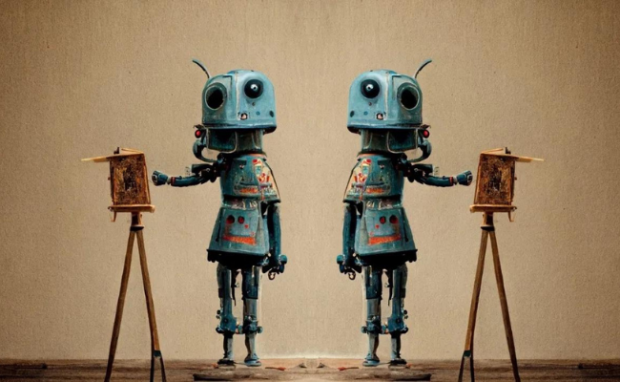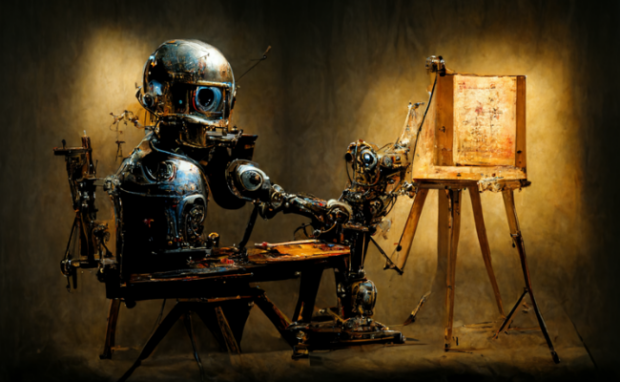Artists defend generative AI in open letter
Many artists fear artificial intelligence will destroy their livelihoods, but some recently defended its use. A group of artists using generative AI wrote an open letter addressed to US Senator Chuck Schumer and the other Congress members. Moreover, they claimed generative AI tools are “empowering and expressive” and not destructive to the creative process.
Artificial intelligence has been rapidly shifting lives worldwide, so it’s not surprising that many have conflicting perspectives regarding its benefits and risks. However, we must hear everyone’s opinions to promote a healthy discussion regarding this technology. After all, that follows the Philippine Daily Inquirer’s slogan: “Balanced News, Fearless Views.”
This article will discuss the latest AI open letter from artists defending generative artificial intelligence. Later, I will compare it with another open letter from Elon Musk and other tech experts warning about AI risks.
What does the AI open letter say?

Photo Credit: bigthink.com
On September 6, 2023, 79 artists using generative AI signed a letter addressed to Sen. Schumer and the US Congress. It starts by quoting a lyric from the critically acclaimed musician Björk:
“I find it so amazing when people tell me that electronic music has no soul. You can’t blame the computer. If there’s no soul in the music, it’s because nobody put it there.”
Then, the petitioners asked the government to help them “put soul in our work.” They claimed most of them dedicated themselves to learning traditional media while dreaming of generative AI’s capabilities.
They believed generative AI makes art more accessible by lowering its long-standing barriers: high costs, abled bodies, and suitable social connections. Yet, most disparage the technology by claiming it is “about merely typing in prompts or regurgitating existing works.”
Others misrepresent their methods as “stealing” and “data theft.” The generative AI artists acknowledged that artificial intelligence can replicate existing works, but they assured they are not interested in malicious practices.
You may also like: How to make money with ChatGPT
They base their art on ingenuity and creating new works. After all, all artists build on previous concepts, ideas, genres, and cultures. Unfortunately, they claimed their fellow creatives fear backlash “if they so much as touch these important new tools.”
The signatories believe artists can breathe life into AI, “directing its innovation towards positive cultural evolution while expanding the essential human dimensions it inherently lacks.” Hence, they call on Sen. Schumer and the US Congress to help them champion a better future for artists.
Lawmakers may begin by letting artists join in creating AI regulations. They argued, “It would be a gross oversight to exclude those in our society who are working within its potential and its limitations.”
What does the other AI open letter say?

Photo Credit: pcmag.com
In March 2023, Elon Musk and other tech experts posted an AI open letter titled “Pause Giant AI Experiments.” They asked AI firms to pause development for six months to help humanity create proper regulations for this technology. It started with a quote from the Asilomar AI principles:
“Advanced AI could represent a profound change in the history of life on Earth and should be planned for and managed with commensurate care and resources.”
However, the AI open letter claims this planning and management is nowhere to be seen. It stated, “Contemporary AI systems are now becoming human-competitive at general tasks.” Then, the petition urged readers to consider these points:
“Should we let machines flood our information channels with propaganda and untruth? Should we automate away all the jobs, including the fulfilling ones?”
“Must we develop nonhuman minds that might eventually outnumber, outsmart, obsolete, and replace us? Should we risk the loss of control of our civilization?” Then, it shared a statement from ChatGPT creator OpenAI:
You may also like: The environmental impacts of NFTs
“At some point, it may be important to get an independent review before starting to train future systems… and for the most advanced efforts to agree to limit the rate of growth of compute used for creating new models.”
The AI open letter used that as a reason to call on “all AI labs to immediately pause for at least six months the training of AI systems more powerful than GPT-4.” Over a thousand tech experts, including Apple co-founder Steve Wozniak and Tesla exec Elon Musk, signed this petition.
However, Apple is now developing generative AI programs. Also, Elon Musk has since declared he wants to create a generative AI chatbot named TruthGPT.
Conclusion
Generative AI artists published a petition supporting using artificial intelligence in creating media. Also, they called on lawmakers to include artists in discussing AI regulations.
They believe hearing from artists will ensure AI legislation benefits creative industries and mitigates risks. After reading both sides of the argument, which side do you prefer?
Do you believe generative AI could help create art, or does it risk eliminating human creativity? You may read more about that issue on the Creative Commons website. Check other digital trends at Inquirer Tech.